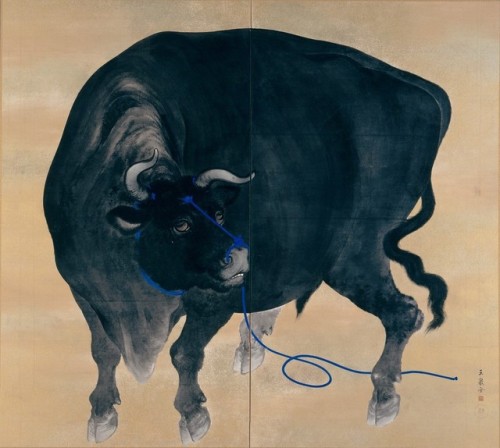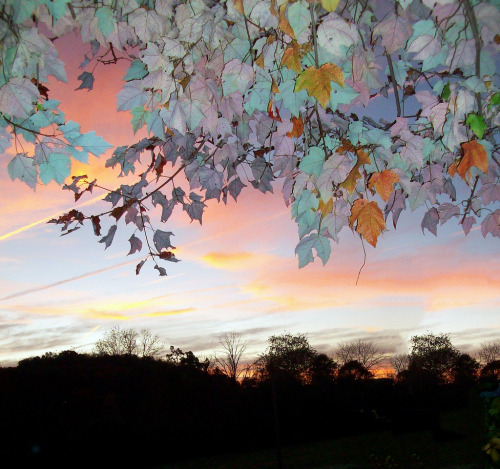La Souffrance Des Arbres Blessés By De Ferschter Website | Instagram | Tumblr

La souffrance des arbres blessés by De Ferschter website | instagram | tumblr
More Posts from Pointe-of-no-return and Others

Gyokusen Mochizuki (1834-1913), Black Bull. Ink, colors and gold on paper.

Water Lilies, Reflections Of Weeping Willows (Left Half) 1919
Claude Monet







Crops from one of the giant Heaven and Hell illustrations I did for Cards Against Humanity back in 2016. This is from the Heaven illustration. The full thing is 1 foot by 6 foot at intended viewing size. The intended style was a sort of Bosch meets where’s waldo.



時間の量

Sam Francis (American, 1923-1994), Untitled, c. 1973. Gouache and watercolor on paper, 24.8 x 47.6 cm.

There’s something about the way spiders move that many of us find inherently creepy. And that something, it turns out, is fluid dynamical. Unlike humans and other vertebrates, spiders don’t move using two sets of opposing muscles. The natural state of their multi-jointed legs causes them to flex inward. This is why dead spiders have their legs all curled up.
To walk, spiders use hydraulic pressure. They pump a fluid called hemolymph into their legs to force them to straighten. If you look closely, you’ll notice that spiders’ legs always connect to the front section of their body. This is called the cephalothorax, and it acts like a sort of bellows that controls the pressure and flow of hemolymph. It moves the hemolymph around the spider’s body in a fraction of a second, allowing spiders to be quite fast, but something about the movement still feels off for those of us used to vertebrate motion. Happy Halloween, everyone! (Image credit: R. Miller, source; see also; submitted by jpshoer)



Merovingian gold and emerald ring, dated to around the 6th century CE. Source: Christie’s.
-
 carolntl reblogged this · 1 year ago
carolntl reblogged this · 1 year ago -
 santelipuunsavu liked this · 3 years ago
santelipuunsavu liked this · 3 years ago -
 thestatesmoon-blog liked this · 4 years ago
thestatesmoon-blog liked this · 4 years ago -
 taburik liked this · 5 years ago
taburik liked this · 5 years ago -
 canweride liked this · 5 years ago
canweride liked this · 5 years ago -
 earthangelnextdoor liked this · 5 years ago
earthangelnextdoor liked this · 5 years ago -
 ninfoman liked this · 6 years ago
ninfoman liked this · 6 years ago -
 ofaleh reblogged this · 6 years ago
ofaleh reblogged this · 6 years ago -
 quietbunn7 reblogged this · 6 years ago
quietbunn7 reblogged this · 6 years ago -
 taztlc liked this · 6 years ago
taztlc liked this · 6 years ago -
 sewerangelnextdoor reblogged this · 6 years ago
sewerangelnextdoor reblogged this · 6 years ago -
 cleverelsie liked this · 6 years ago
cleverelsie liked this · 6 years ago -
 corgicon liked this · 6 years ago
corgicon liked this · 6 years ago -
 paola-here liked this · 6 years ago
paola-here liked this · 6 years ago -
 byrneing reblogged this · 6 years ago
byrneing reblogged this · 6 years ago -
 letargiando reblogged this · 6 years ago
letargiando reblogged this · 6 years ago -
 darflores reblogged this · 6 years ago
darflores reblogged this · 6 years ago -
 terriblemothers liked this · 6 years ago
terriblemothers liked this · 6 years ago -
 glossplum liked this · 6 years ago
glossplum liked this · 6 years ago -
 myuria reblogged this · 6 years ago
myuria reblogged this · 6 years ago -
 sharedmemory reblogged this · 6 years ago
sharedmemory reblogged this · 6 years ago -
 intranara reblogged this · 6 years ago
intranara reblogged this · 6 years ago -
 mullberry reblogged this · 6 years ago
mullberry reblogged this · 6 years ago -
 mullberry liked this · 6 years ago
mullberry liked this · 6 years ago -
 wildnoire reblogged this · 6 years ago
wildnoire reblogged this · 6 years ago -
 lovelustlossbiipf reblogged this · 6 years ago
lovelustlossbiipf reblogged this · 6 years ago -
 ratatouiile liked this · 6 years ago
ratatouiile liked this · 6 years ago -
 wardrum reblogged this · 6 years ago
wardrum reblogged this · 6 years ago -
 poor-becca reblogged this · 6 years ago
poor-becca reblogged this · 6 years ago -
 nekogoddess liked this · 6 years ago
nekogoddess liked this · 6 years ago -
 storybook27 liked this · 6 years ago
storybook27 liked this · 6 years ago -
 ergorose liked this · 6 years ago
ergorose liked this · 6 years ago -
 funkyshortgirl liked this · 6 years ago
funkyshortgirl liked this · 6 years ago -
 alikeday liked this · 6 years ago
alikeday liked this · 6 years ago -
 absurdspectrums liked this · 6 years ago
absurdspectrums liked this · 6 years ago -
 moonyrocks liked this · 7 years ago
moonyrocks liked this · 7 years ago -
 flamipspy liked this · 7 years ago
flamipspy liked this · 7 years ago -
 uenxx-blog liked this · 7 years ago
uenxx-blog liked this · 7 years ago -
 odmil reblogged this · 7 years ago
odmil reblogged this · 7 years ago -
 devilshymn reblogged this · 7 years ago
devilshymn reblogged this · 7 years ago -
 illleaveitalone reblogged this · 7 years ago
illleaveitalone reblogged this · 7 years ago -
 gogurt reblogged this · 7 years ago
gogurt reblogged this · 7 years ago